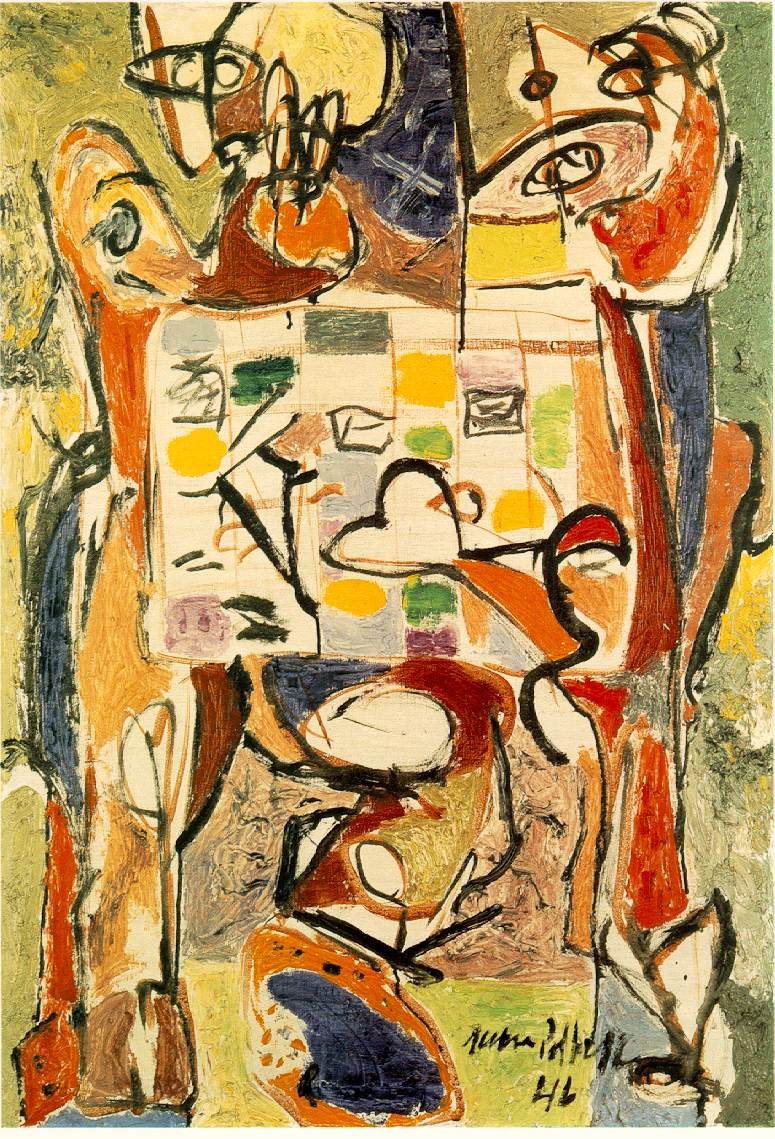Art changes only through strong convictions, convictions strong enough to change society at the same time. So proclaimed Theophile Thore, quarante-huitard critic, admirer of Theodore Rousseau, Millet, and Courbet, an art historian who discovered Vermeer and one of the spokesmen for a new, more democratic art, in 1855, in exile from Louis Napoleon’s imperial France.
Slide 1: Constable Stonehenge

John Constable (1776-1837), Stonehenge, 1811-13
Notes:
- Stonehenge was built c. 2,500 BCE
- William Blake claimed to be a Druid
- William Wordsworth wrote a poem on Stonehenge
- Turner made sketches, prints and paintings
- An example of the sublime
Slide 2: Kandinsky Cossacks
Wassily Kandinsky (1866-1944)
Kandinsky ‘s special understanding of the affinities between painting and music and his belief in the Gesamtkunstwerk, or the total work of art
Symbolists loved Wagner – Germanic myths and legends
Lohengrin stirred Kandinsky. Moscow – beloved city of childhood
Melodic compositions revitalized by Paul Cezanne later by Symbolist Ferdinand Hodler
Cezanne’s Large Bathers within the text of On the Spiritual in Art, stating that the picture represents an example of this clearly laid out, melodic composition with open rhythms.
See: http://www.artchive.com/artchive/K/kandinsky.html
Slide 3: Cabanel The Birth of venus
Alexandre Cabanel (1823-1889)
Born in Montpellier, France, 1823, Alexander Cabanel was probably best known as a teacher of the academic arts. From a family without the means to send their son to art school, at the age of eleven, he was awarded a grant to train in Paris at the School of Ecole des Beaux-Arts.
Alexandre entered his first Salon show at the age of twenty. Two years later he won second place in the Prix de Rome, enabling him to attend lessons in Rome studying the classical academic themes.
See: http://tallulahs.com/c4.html
Slide 4: Manet Olympia

Slide 5: Monet Autumn Effect at Argenteuil
Claude MONET 1840 – 1926
Autumn effect at Argenteuil 1873
Courtauld Gallery, Courtauld Institute of Art
Slide 6: Pollock Autumn Rhythm
Slide 7: Kirchner The Street

Slide 8: Picasso Le Demoiselles d’Avignon

Slide 9: Cassatt The Cup of tea
Slide 10: Pollock The Cup of Tea

Slide 11: Oppenheim Object:Fur Breakfast

Meret Oppenheim
Born 1913, Berlin, Germany. Died 1985. research style and find similar artists: Sculpture / Surrealism / Writing. Meret Oppenheim is probably best known for the fur teacup and spoon, one of the most recognized of Surrealist Objects. Many of her objects and paintings created during the same period have since been lost. Her contributions to the Surrealist Movement, and associations with many members of the group began well before she turned 20 years of age.
Slide 12: Sherman Untitled no.3
See: http://www.tenverses.org/ten1.html
Slide 13: Barr Diagram of the Development of Abstract Art
Alfred H. Barr (can ‘t find what the H. stands for)
born 1902 died 1981
Princeton and Harvard
Toured Europe
Loved Vincent Van Gogh
Barr ‘s own words, A work of art… is worth looking at primarily because it represents a composition or organization of color, line, light and shade. Resemblance to natural objects, while it does not necessarily destroy these esthetic values, may easily adulterate their purity. Therefore, since resemblance to nature is at best superfluous and at worst distracting it might as well be eliminated,
Our idea of what is modern art and how it developed has been mainly shaped by the scholar Alfred H. Barr. Barr was appointed Assistant Professor of Art History at Wellesley College and in 1929 became director of the Museum of Modern Art (MOMA.) in New York. At Wellesley, Barr had taught the first ever course to be devoted to twentieth century art; this was new since this was a vastly under – researched field. Barr was attempting to provide serious scholarly research on the definition of modern art and how it evolved from earlier movements such as Impressionism. More importantly, Barr wanted to construct a history of modern art. The methodology that Barr adopted to trace the origins and development of modern art was to construct two overarching views which was reflected in his attitude towards exhibiting modern art. Thus, Barr ‘s first model consisted of’Fantastic Art, Dada and Surrealism ‘, and his second more influential one was ‘Cubism and Abstract Art ‘. Both of these fields of modern art were incorporated in an exhibition held at MOMA in 1936. If you look at Barr ‘s chart that appeared on the front of his 1936 catalogue, you will see that, according to Barr, Cubism is caused by chosen aspects of late – nineteenth century art.
See:
Barr This museum is a torpedo moving through time, its head the ever-advancing present, its tail the ever-receding past of 50 to 100 years ago.
